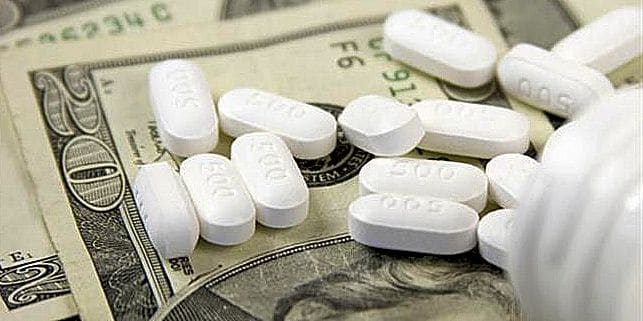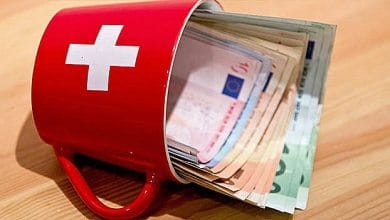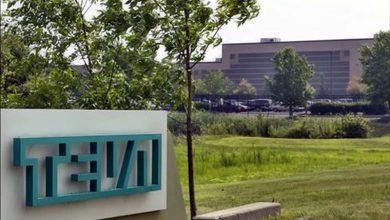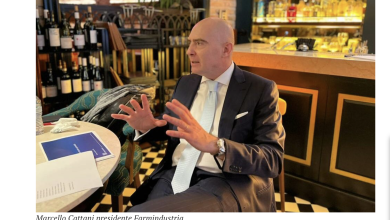
Between July and September alone, agreements for a total of 61 billion dollars, with transactions announced for an additional 31 billion. In all, almost 100 billion dollars that 'moved' in three months.
article published on: 16/12/2014 – adnkronos
 The merger and acquisition fever in the pharmaceutical industry has reached its peak in the year that is about to end. According to the latest quarterly data of PricewaterhouseCoopers, the life sciences and pharmaceuticals sector reported deals totaling $61 billion between July and September alone, with deals announced for an additional $31 billion. In all, almost 100 billion dollars that 'moved' in three months.
The merger and acquisition fever in the pharmaceutical industry has reached its peak in the year that is about to end. According to the latest quarterly data of PricewaterhouseCoopers, the life sciences and pharmaceuticals sector reported deals totaling $61 billion between July and September alone, with deals announced for an additional $31 billion. In all, almost 100 billion dollars that 'moved' in three months.
Also according to Pwc, the volume of deals closed in the sector in the third quarter of 2014 rose by 27.2% to 42 total, compared to 33 agreements in the second quarter, and grew by 68% (compared to 25) compared to those in the third quarter 2013. The increase in the last period is above all the result of agreements announced and not yet concluded, precisely those that should close for a total of over 30 billion dollars. The value of deals closed during the third quarter of 2014 also increased by as much as 304.3% to $61 billion, from approximately $15 billion in the second quarter of the year, and by 63.3% compared to the third quarter of 2013.
Billion-dollar agreements have been reached, others hypothesized, announced but not yet materialized. Like the one between Pfizer and AstraZeneca: the American multinational set its sights on the Anglo-Swedish at the beginning of last spring, but the agreement then faded away. Since the summer, however, there have been rumors of a 'backfire'.
 And then the Irish Actavis which acquired the US giant Allergan for 66 billion dollars; Merck&Co. which the antibiotic maker Cubist snapped up just last week for $9.5 billion. Or again, the Japanese Daiichi Sankyo which, to strengthen its presence in the field of oncology, bought the American Ambit Biosciences, for over 400 million dollars. And that's not all: Abbott bought Shire (40 million euro), Bayer decided to acquire the Consumer Care business of Merck&Co.
And then the Irish Actavis which acquired the US giant Allergan for 66 billion dollars; Merck&Co. which the antibiotic maker Cubist snapped up just last week for $9.5 billion. Or again, the Japanese Daiichi Sankyo which, to strengthen its presence in the field of oncology, bought the American Ambit Biosciences, for over 400 million dollars. And that's not all: Abbott bought Shire (40 million euro), Bayer decided to acquire the Consumer Care business of Merck&Co.
In any case, on an international level, in the pharmaceutical world between 1995 and 2005, according to data from McKinsey, some of the 20 largest mergers in the industrial sector were reached, defined as deals greater than 10 billion dollars, in which the companies pledge at least 10% of the value of sales and 20% of the capital of the acquiring company.
Antonelli (Msd Italia), no 'serial merger', only targeted agreements
The CEO, expensive and difficult to manage mega-mergers
“Although 2014 was a record year for the pharmaceutical industry, with deals exceeding $212 billion according to a Bloomberg survey, we are not 'serial mergers'. Our company has always been more interested in targeted acquisitions that strengthen a certain sector, rather than mega mergers that are generally expensive and difficult to manage”.
Pierluigi Antonelli, president and CEO of Msd Italia explains it, speaking with Pharmakronos of the 'boom' of mergers and acquisitions in the sector during the year that is about to end. “For this reason – he adds
– we prefer to choose small and medium-sized excellences that are able to complete our own offer, as in the case of Cubist for antibiotics”, acquired last week by Merck&Co. for $9.5 billion, “or Idenix, acquired in August, for its hepatitis C virus drug. “MSD – he continues – in fact boasts a long tradition and solid leadership in the treatment of infectious diseases thanks to important drugs against HIV, hepatitis C, fungal and bacterial infections and hospital Acute Care is one of the priority areas on which we have focused our interest in recent years, together with oncology, diabetes, immunology and others.
It is no coincidence that our hospital drug portfolio grew by 12% in the first 10 months of 2014 over the previous year (Ims Health). Our commercial products already include several antibiotics and antifungals, but we are also at an advanced stage of development with promising molecules against clostridium difficile, cytomegalovirus and multidrug-resistant bacterial infections.
The acquisition of Cubist, in this sense, adds value, breadth and depth to our portfolio of innovative molecules and will allow us to reach a wider patient population by effectively responding to many unmet medical needs”.
Barbara Di Chiara – December 17, 2014 – PharmaKronos
Aringhieri (Dompé), companies are 'gluttonous' if they are strong in research
“To play a strategic game in the next 20 years, you need to know how to do something well and generate new knowledge independently. It is the challenge that we all face, and that Dompè in particular has taken up. In 2016 we hope to finally see the fruits, and to say that we were right”. To explain the bet made by one of the main Italian pharmaceutical companies, the Dompé group, is the managing director Eugenio Aringhieri, speaking with Pharmakronos of 2014 as a 'record' year for mergers and acquisitions in the sector, worldwide. According to the CEO, Italian companies often appeal to large multinationals: "We have had examples such as Gentium or Eos", both acquired by foreign companies during the year. “The innovative research that we are able to offer today – he points out – opens up a myriad of opportunities. Know-how is a very important element and our country has shown that it has a competitive scientific community and entrepreneurs who want to take risks.
On the other hand, we have now lost our cost leadership, with the entry into the game of emerging countries. But this has given us back a competitiveness prize linked to research and quality”.
By now, according to Aringhieri, “the playing field is clear: if you want to play a real game, you have to generate real answers, to real health questions. We have begun a process of change, also choosing high-risk therapeutic areas, where alternatives often do not exist (transplants, rare diseases, oncology). We have to do better what others already do.
All this considering that geographies are now global, the game cannot be played only in one's own country or even in one's own continent".
Barbara Di Chiara – December 17, 2014 – PharmaKronos

Mergers and Acquisitions are gaining prominence, but studies show that they often end up destroying the value of the shares rather than creating it. This is one reason why investors and businesses place so much value on revenue growth. In fact, if you compare the performance of the shares of a new index of 23 companies that have the best revenue growth and compare them to the S&P500 (the American stock index), the index of Companies in Revenue Growth easily beats that of the S&P500 31% against 22% in the last 12 months. And looking even further back five years, it beat the S&P500's 15% against 3%. (source: Fortune.com)





